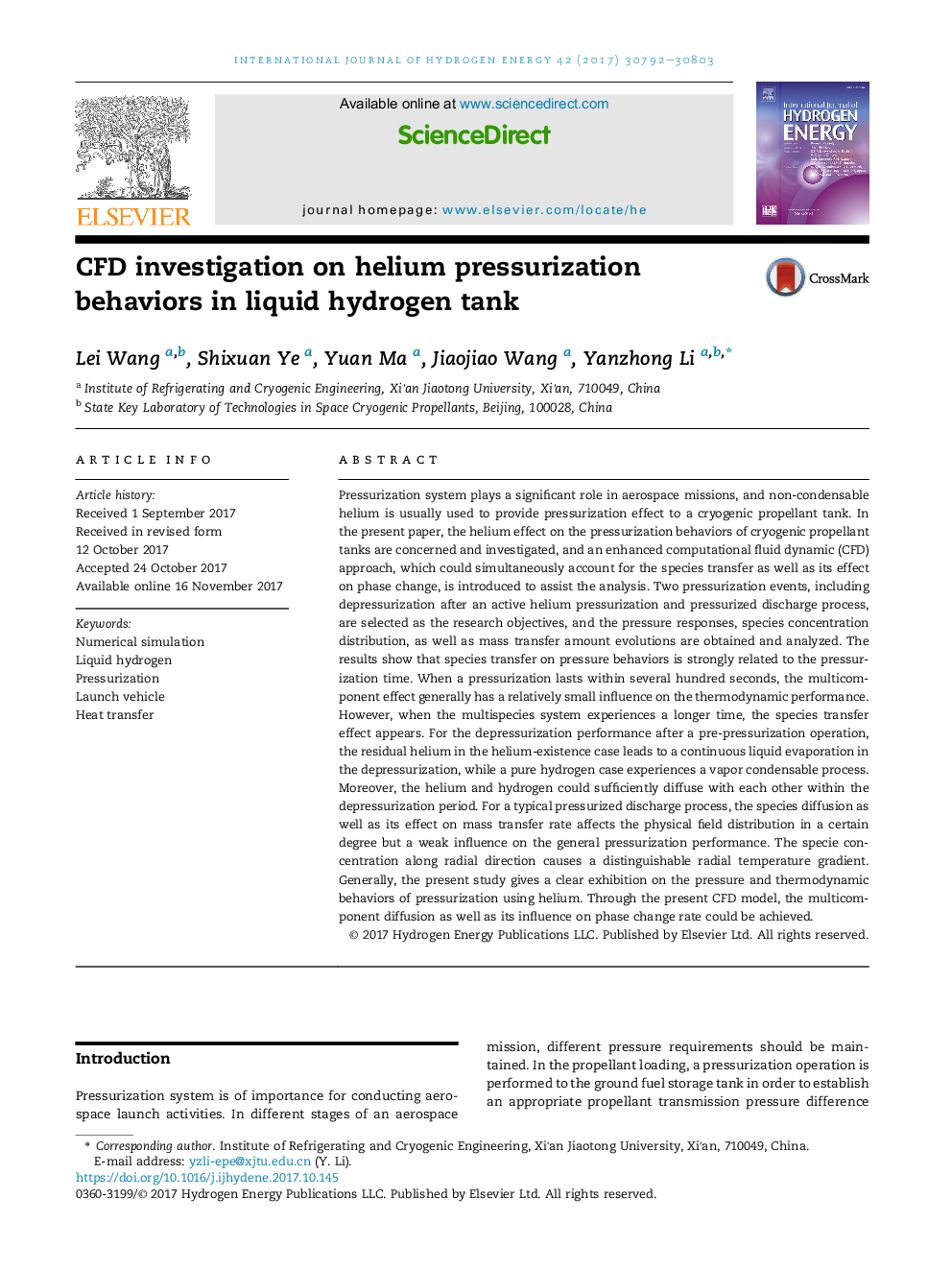| Article ID | Journal | Published Year | Pages | File Type |
|---|---|---|---|---|
| 7708792 | International Journal of Hydrogen Energy | 2017 | 12 Pages |
Abstract
Pressurization system plays a significant role in aerospace missions, and non-condensable helium is usually used to provide pressurization effect to a cryogenic propellant tank. In the present paper, the helium effect on the pressurization behaviors of cryogenic propellant tanks are concerned and investigated, and an enhanced computational fluid dynamic (CFD) approach, which could simultaneously account for the species transfer as well as its effect on phase change, is introduced to assist the analysis. Two pressurization events, including depressurization after an active helium pressurization and pressurized discharge process, are selected as the research objectives, and the pressure responses, species concentration distribution, as well as mass transfer amount evolutions are obtained and analyzed. The results show that species transfer on pressure behaviors is strongly related to the pressurization time. When a pressurization lasts within several hundred seconds, the multicomponent effect generally has a relatively small influence on the thermodynamic performance. However, when the multispecies system experiences a longer time, the species transfer effect appears. For the depressurization performance after a pre-pressurization operation, the residual helium in the helium-existence case leads to a continuous liquid evaporation in the depressurization, while a pure hydrogen case experiences a vapor condensable process. Moreover, the helium and hydrogen could sufficiently diffuse with each other within the depressurization period. For a typical pressurized discharge process, the species diffusion as well as its effect on mass transfer rate affects the physical field distribution in a certain degree but a weak influence on the general pressurization performance. The specie concentration along radial direction causes a distinguishable radial temperature gradient. Generally, the present study gives a clear exhibition on the pressure and thermodynamic behaviors of pressurization using helium. Through the present CFD model, the multicomponent diffusion as well as its influence on phase change rate could be achieved.
Related Topics
Physical Sciences and Engineering
Chemistry
Electrochemistry
Authors
Lei Wang, Shixuan Ye, Yuan Ma, Jiaojiao Wang, Yanzhong Li,
